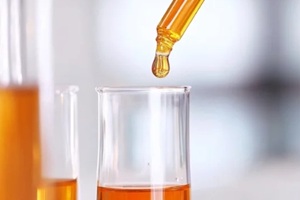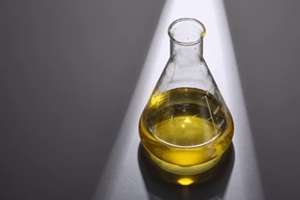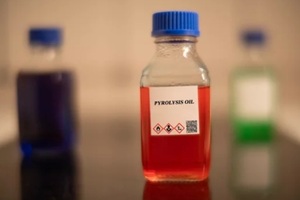March 24, 2025

Pyrolysis oil is derived from end-of-life plastic waste that is typically destined for landfills or incineration. As the global plastic waste crisis continues to mount, with over 300 million tons of plastic produced annually, advanced plastic recycling technologies like pyrolysis are becoming increasingly vital for transforming waste into valuable resources while reducing the environmental footprint of plastic production.
Pyrolysis technology involves breaking down plastic waste through a sophisticated process of thermal decomposition. Operating at temperatures between 300°C and 900°C in an oxygen-free environment, the process breaks the long polymer chains in plastics into shorter hydrocarbon molecules, creating a mixture of gases, oils, and char. The absence of oxygen prevents combustion and allows for the controlled decomposition of the material.
The resulting pyrolysis oil, also known as synthetic crude oil, contains a complex mixture of hydrocarbons similar to petroleum-based products. The exact composition depends on various factors, including the type of plastic feedstock, temperature, residence time, and reactor design. Most commonly, polyethylene (PE), polypropylene (PP), and polystyrene (PS) yield the highest quality pyrolysis oil.
Companies can then refine this oil using conventional petroleum refining processes to create feedstock for producing new plastic products. The refined product can achieve a quality comparable to virgin materials, making it suitable for high-end applications.
This technological breakthrough offers a solution for plastics that cannot be readily recycled using traditional mechanical methods, particularly contaminated, mixed, or multilayer plastics that often end up in landfills.
Modern pyrolysis facilities employ sophisticated control systems to optimize the process conditions. Key parameters such as temperature profiles, heating rates, and residence time are carefully monitored and adjusted to maximize oil yield and quality.
Advanced catalysts can be used to improve the efficiency of the process and enhance the quality of the final product. The process typically achieves conversion rates of 75-85% for suitable plastic waste, with the remaining output consisting of combustible gases that can be used to power the process itself, making it more energy-efficient.
Recent technological advances have also focused on reducing energy consumption and improving the economics of the process at a commercial scale.

The conversion of plastic waste into pyrolysis oil delivers multiple environmental advantages. Beyond reducing landfill waste, the process can decrease CO2 emissions by 50-75% compared to incineration. When the pyrolysis oil replaces virgin fossil resources in plastic production, it creates a circular economy for plastics, significantly reducing the carbon footprint of new plastic products.
The technology also helps address marine plastic pollution by providing an economic incentive to collect and process plastic waste that might otherwise end up in oceans. Furthermore, pyrolysis can handle mixed plastic waste streams that traditional recycling methods cannot process, expanding the range of recyclable materials.
As demand for more sustainable materials grows, the new partnership represents an important step in scaling recycling efforts. The collaboration supports industries seeking sustainable alternatives, providing them with high-quality recycled materials from a circular system.
The materials created through pyrolysis recycling are particularly valuable for applications requiring high-quality standards. Food-grade packaging, including pet food containers and snack packaging, represents a major market opportunity. These applications demand materials that meet strict safety and performance requirements while providing sustainable alternatives to virgin plastics.
The medical and pharmaceutical industries also benefit from pyrolysis-derived materials, using them in everything from medical device packaging to pharmaceutical containers. These applications demonstrate how recycled plastics can meet the most demanding industry standards without compromising quality or safety.

To ensure transparency and accountability in the use of recycled content, manufacturers employ a “mass balance” approach. This system tracks recycled materials throughout the production process, from waste collection through to final product manufacturing.
It allows companies to make verified claims about recycled content while maintaining the efficiency of continuous production processes.
The mass balance methodology, certified by independent organizations, provides customers with confidence in sustainability claims and helps companies demonstrate progress toward circular economy goals. This approach has become increasingly important as regulations and customer demands for sustainable products continue to grow.
To explore more innovations and trends in plastic recycling, visit PLASTICS, the Plastics Industry Association. The association offers a range of resources, including news,whitepapers, and important industry insight on the global movement toward circular solutions.
If you’re not already, become a member today to access cutting-edge insights and help shape the future of the plastics industry.
PLASTICS and the Future Leaders in Plastics (FLiP) Committee are devoted to supporting and encouraging the next generation of plastics leaders who will play a crucial role in the innovation, technology and future of the plastics industry. FLiP’s mission is to provide young professionals under the age of 40 the exposure, education and resources they need to build lifelong careers in plastics. Want to join? Want to get your employees involved? Email: flip@plasticsindustry.org